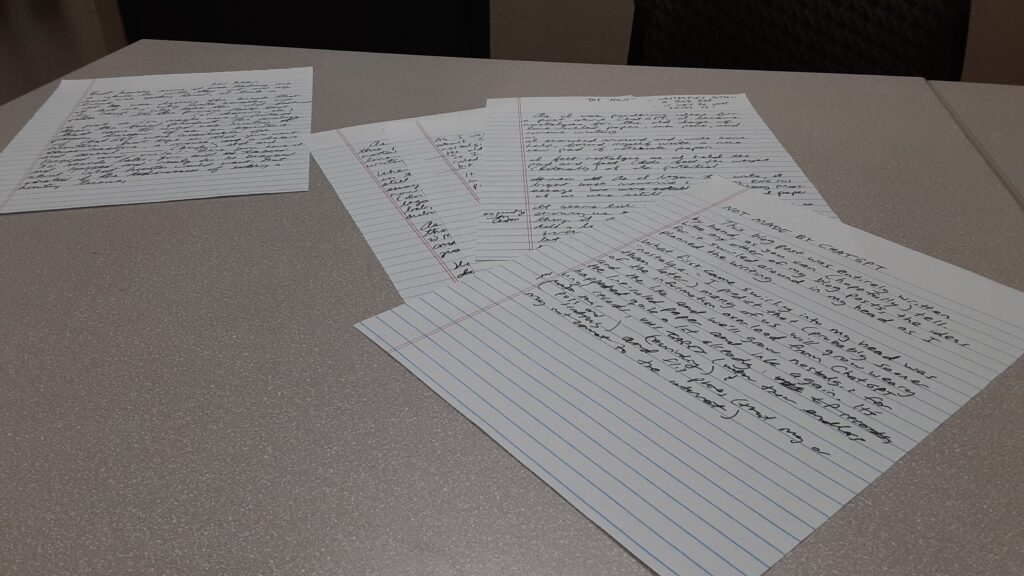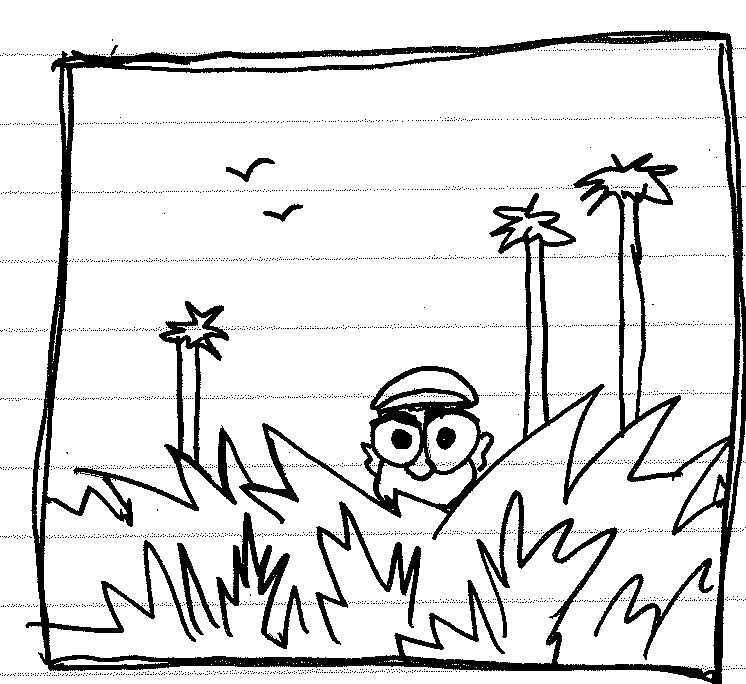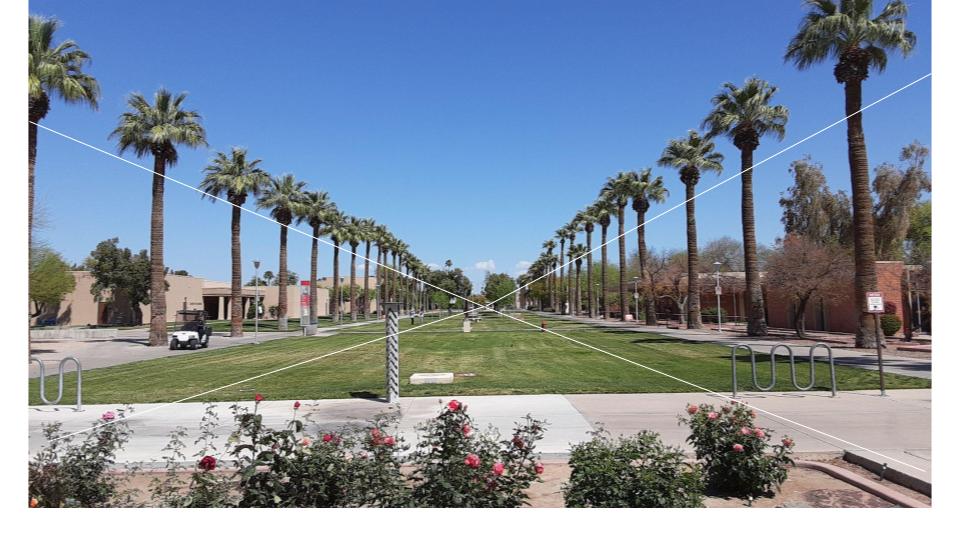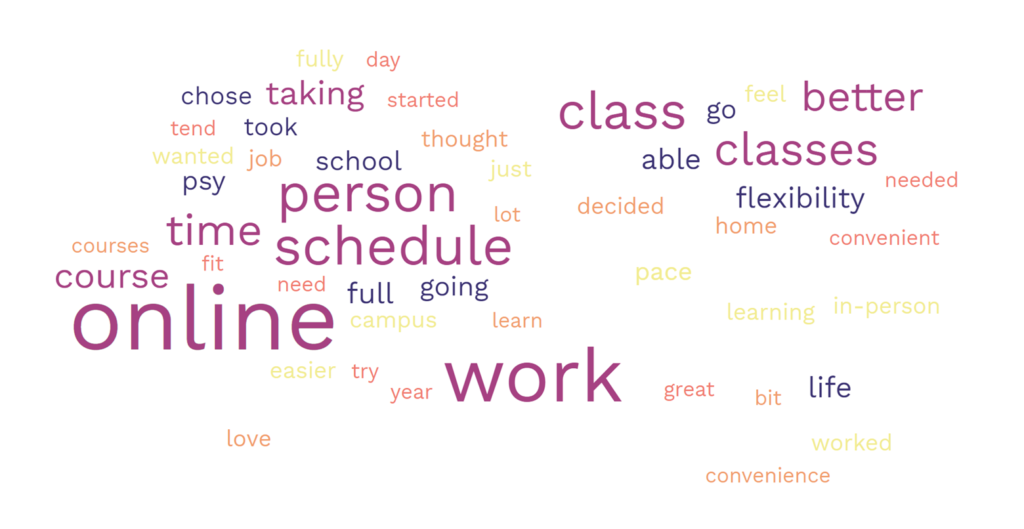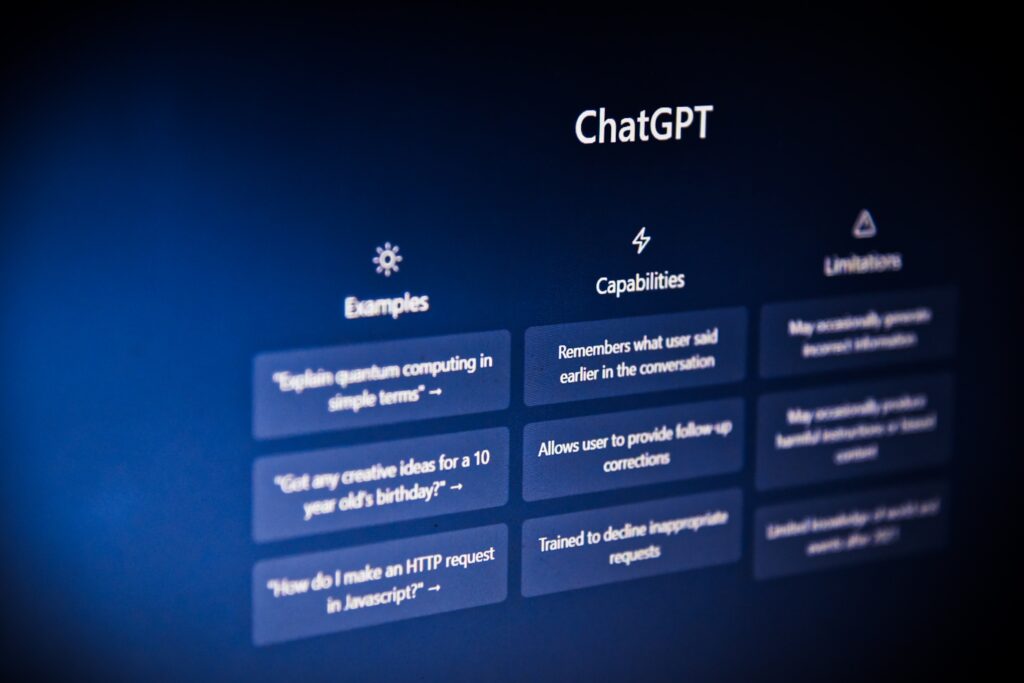I don’t know what I think about AI in education. To be honest, I haven’t given it much thought. I know I should. Last night, I was grading an essay and “Ugh, what if this was written by AI? More importantly, what if I don’t know?” scrolled across my brain. Honestly, I don’t feel like I have the mental capacity to grapple with all the complications about this right now. It takes me time to process things. I did spend a little time with this article about using it to save time, though.
So, what if I wrote, for this post, about another type of technology? In his Wonderworks: The 25 Most Powerful Inventions in the History of Literature, Dr. Angus Fletcher asserts one of the most powerful of technologies is literature. Yes! It’s true! With a background in neuroscience, Fletcher writes about different inventions in the technology of literature which function to offer different salves for the brain.
For example, he discusses the invention of the Sorrow Resolver through the plot of Hamlet. I reflected the following:
Hamlet was written after Hamnet’s passing? After all the years of studying Shakespeare, why have I not heard this before? It makes perfect sense. And as far as Nero goes, what exactly is a mechanical bedroom or killer yacht? If Shakespeare’s guide to grief was Cardano’s Comfort and the advice was to feel it like a man, it is interesting how he rebuffs it through Macduff in the Scottish play. I remember this part; although I didn’t think of it as a preface to therapy, only as support for Macduff exemplifying “a good man” and foiling Macbeth. If therapy surrounding grief has two parts of “acknowledging the hurt of the bereavement” and “dwelling on the happy memories,” then I understand Fletcher’s point regarding Macduff (130). The analysis and rationale of the juicy revenge plot as a distraction from grief is also sound. However, it makes me contemplate how grieving women were treated, either in deflecting the grief or descending into madness. When I read Hamlet, I was more enveloped in Ophelia and Rosencrantz and Guildenstern than I was Hamlet’s insufferable woe-is-me wandering. Hamlet had all the makings of a revenge plot which was never fulfilled because he fails with both revenge and the remembrance play (Fletcher 135). Despite this, it has captivated audiences, though, because it is a demonstration of a character acknowledging grief, wallowing in grief, and moving through the actions of feeling guilty for not memorializing the dead “enough.” Grief is complicated and complex. No one demonstrates grief in the same way. It is not until the final act when grief is acknowledged as a public emotion and via Laertes, “Hamlet acknowledges that someone can feel like him” when he finds the guilt lift (Fletcher 136-37). According to Fletcher, the “Sorrow Resolver” includes the “Grief Releaser” and the “Guilt Lifter” which work to lift the burden of feeling alone in grief which makes room for the dopamine and “happy memories” (138).
This chapter has impeccable timing for me. My grandmother recently passed. Though she was 101 and suffering from dementia, I felt her loss acutely. She was my last grandparent and the one I was closest to. In watching my mom deal with the loss, I saw her not pausing until after the funeral, mass, and celebration of life because she wanted to be sure she created a memorial that lived up to what my grandmother would have wanted. As a grandchild, I was able to focus more on my own grief to stop and feel it, until I returned to work. It felt lonely because no one in my immediate household seemed to understand how I felt. When I was able to connect with my cousins, the burden was lifted a bit. In other ways, I have also felt grief, not through the physical loss of someone, but through the loss of life taking a different direction than what was intended or imagined. In both of those circumstances, at the time, I think I just kept moving the plot because I had to and probably was not ready to feel the accompanying intense emotions. Of course, it doesn’t mean the emotions go away, and certainly, if I talk to someone who has had a similar experience, it makes me feel like a part of something greater. There is comfort in that.
Fletcher also explains an invention of the Tale Told from Our Future to excite curiosity. My reflection:
An example of a book I enjoyed that began with a story told from the future is The Kite Runner by Khaled Hosseini. The book begins, “I became what I am today at the age of twelve, on a frigid overcast day in the winter of 1975. . . .] That was a long time ago, but it’s wrong what they say about the past, I’ve learned, about how you can bury it. Because the past claws its way out” (Hosseini 1). From the first page, the book is a page turner. Of course, it was used effectively to excite my curiosity the first time I encountered it because I love the line about the past clawing its way out. It’s perfect. It sets the stage for the entire novel because Amir spends his life attempting to atone for his decision that day. His choices and actions, at times throughout the novel, are despicable. Though, the reader has to grapple with the truth that he was an immature, spoiled child when he chose to leave Hassan. We are left questioning whether he can ever redeem himself into adulthood, even when he is beaten almost to death by Assef and rescues Sohrab from taking his own life; therein is the curiosity. My subconscious must be attracted to this concept of “exciting the curiosity within” because many of the works listed in the chapter I have read, and I definitely enjoyed from riddle to thrill: Sir Gawain and the Green Knight, Macbeth, Gone Girl, Twilight, The Lovely Bones, and The Bourne Identity.
Furthermore, Fletcher discusses the invention of the Stress Transformer to energize your life to which I reflected:
I found similarity in Fletcher’s description of “horror different” with what Stephen King asserts in his essay “Why We Crave Horror Movies.” Essentially, he says we watch the most aggressive of them because it keeps “the gators fed.” Horror movies are the raw meat we feed to the gators, our dark, nasty thoughts swimming around behind our “civilized forebrain” (King). I also liked the description about the concept that stress is not always harmful, and there can be good stress (that won’t kill you!). The concept reminded me about how when students are learning a new concept, there may be struggle or resistance, and through the struggle, learning will emerge. I think the motto is, “Embrace the struggle.”
Every October, my fiancé and I use the month to watch a different horror movie every night. He chooses one night; I choose the next night. My choices are always lame and tame or hilarious dark comedies like Sean of the Dead or What We Do in the Shadows. His are always the scariest: Friday the 13th, Halloween, Salem’s Lot, or the original Texas Chainsaw Massacre (THE most terrifying movie I’ve ever seen). The last horror film that energized me was probably Get Out or Open Water. For a book, it will always be The Stand. Though, I recently read I’ll Be Gone in the Dark, and that one stuck with me for a while. Anything dealing with real life horror typically resonates heavier with me. As far as a film that took me beyond dangerous and made me laugh, it was either Midsommar or the end of the original Friday the 13th. The last scene in Midsommer was just…I have no words. As a child, I used to love Scary Stories to Tell in the Dark and reading about ghosts like the Amityville Horror, too. When I think about the difference between the horror that energized me, there was real fear ingrained in me through the experience, and the plots, characters made me think. The horror that made me laugh was because I didn’t have another reaction as I was beyond shock.
Additionally, he explains the invention of the Fairy-Tale Twist to rid pessimism. My thoughts:
I am a Disney kid. Growing up, I loved all the movies: Cinderella, Snow White and the Seven Dwarfs, Sleeping Beauty, The Little Mermaid, The Lion King, Lady and the Tramp, and The Fox and the Hound are some I remember specifically from childhood. From books, I recall my fascination with Aesop’s fables, “Rumpelstiltskin”(oh to be able to weave gold!), “Hansel and Gretel” (if I was ever lost in the forest with my little sister, I would know what to do), “ The Golden Touch of King Midas” (the golden touch would become somewhat cumbersome after awhile), “Jack and the Beanstalk”(where can I buy magic beans?), “The Emperor’s New Clothes” (how did he not know he was naked?), “Goldilocks and the Three Bears” (Goldilocks is a brat, but I admired her confidence), “Rapunzel” (oh to have hair like Rapunzel!), “The Princess and the Pea” (I felt I could relate when walking with a rock in my shoe), “Thumbelina” (I wanted to put her in my pocket), “The Ugly Duckling” (as a redhead in a family of brunettes, I felt the odd one out), “The Three Little Pigs” (the best house to have is one of bricks…duh), “The Hare and the Tortoise” (slow and steady), “The Boy Who Cried Wolf” (he got what he deserved), and “Little Red Riding Hood” (I was caught up with how a little girl was allowed to prance through the woods). Later, I was exposed to Brothers Grimm and was engrossed with their dark and grotesque approach like Cinderella’s step-sisters cutting their feet to fit in their shoes. I’m surprised Fletcher did not mention these as they certainly would undo Perrault’s thorn. Also, as an aside, I found a similarity between the “catastrophizing” like-begets-like logic and self-judgment with the effects of social media.
When Fletcher writes about the modern twists and Superman, I annotated in the column, “Annie!” prior to reaching the mention of it on page 123. Annie was probably my favorite. I loved all things Annie, likely because she looked like me, and of course, how amazing would it be to find a beautiful dog and be plucked by a Daddy Warbucks and thrust into wealth beyond wealth with everything a heart desires? My aunt even bought me an Annie wig for my sixth birthday. Ok, as a kid, this seemed really cool. As an adult, I see it’s a bit problematic. I do see how the lucky twist included as a plot device can offer hope and work to fend off pessimism.
Overall, Fletcher proposes 25 of these literary “inventions.” My favorite was the one regarding the Choose Your Own Accomplice through the work of Maya Angelou. I have a presentation on that one, so it doesn’t work for this purpose. Also, none of this post was written using AI.
Thanks for reading!


